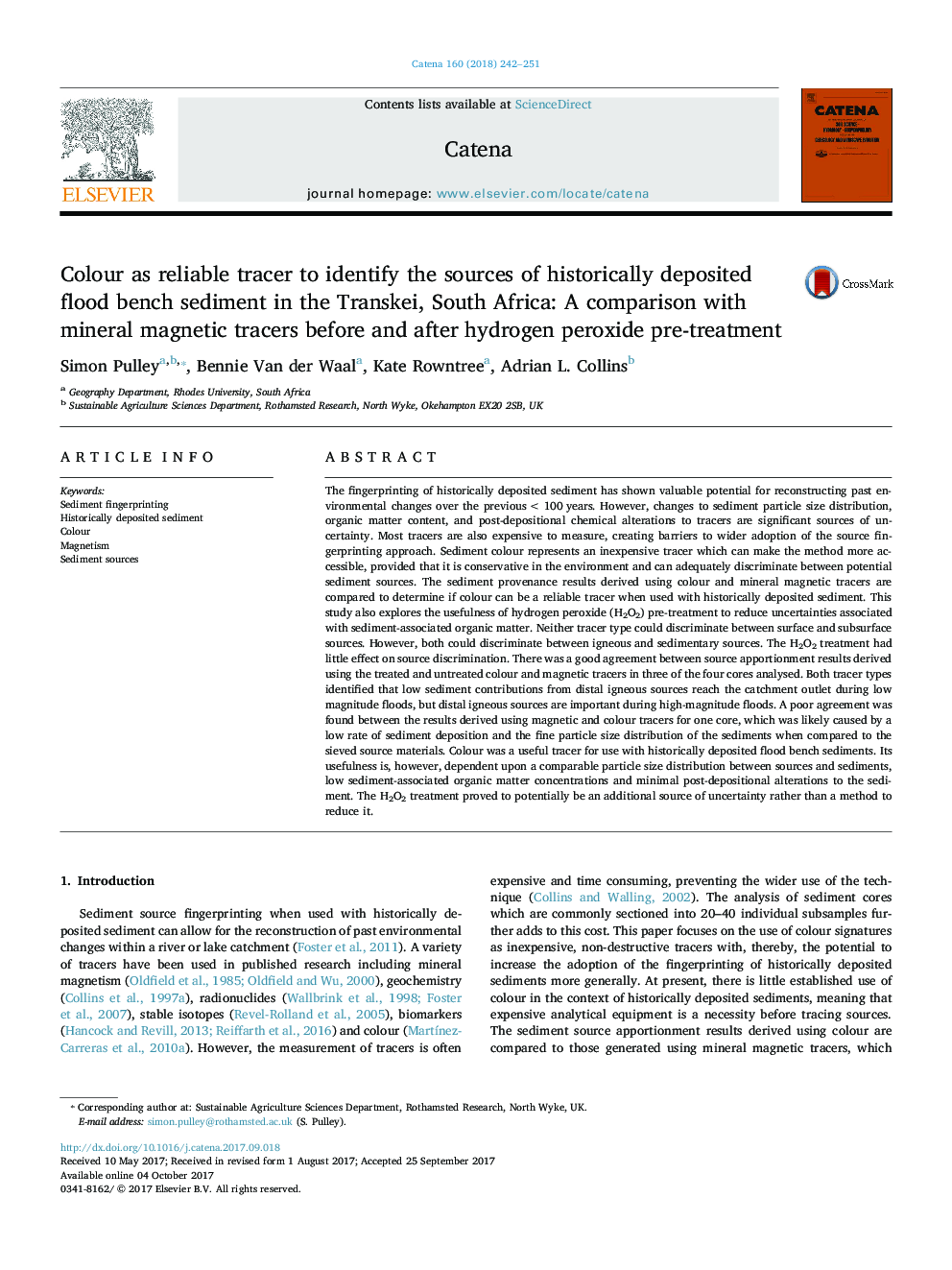| کد مقاله | کد نشریه | سال انتشار | مقاله انگلیسی | نسخه تمام متن |
|---|---|---|---|---|
| 5770044 | 1629194 | 2018 | 10 صفحه PDF | دانلود رایگان |

- Colour was assessed to determine if it could trace historically deposited sediments.
- Flood bench cores were traced using colour and magnetism and results compared.
- In three of four cores sediment provenance results were comparable.
- Hydrogen peroxide pre-treatment of sediment did not reduce uncertainty.
- Colour may be effective when combined with thorough assessment of uncertainty.
The fingerprinting of historically deposited sediment has shown valuable potential for reconstructing past environmental changes over the previous <Â 100Â years. However, changes to sediment particle size distribution, organic matter content, and post-depositional chemical alterations to tracers are significant sources of uncertainty. Most tracers are also expensive to measure, creating barriers to wider adoption of the source fingerprinting approach. Sediment colour represents an inexpensive tracer which can make the method more accessible, provided that it is conservative in the environment and can adequately discriminate between potential sediment sources. The sediment provenance results derived using colour and mineral magnetic tracers are compared to determine if colour can be a reliable tracer when used with historically deposited sediment. This study also explores the usefulness of hydrogen peroxide (H2O2) pre-treatment to reduce uncertainties associated with sediment-associated organic matter. Neither tracer type could discriminate between surface and subsurface sources. However, both could discriminate between igneous and sedimentary sources. The H2O2 treatment had little effect on source discrimination. There was a good agreement between source apportionment results derived using the treated and untreated colour and magnetic tracers in three of the four cores analysed. Both tracer types identified that low sediment contributions from distal igneous sources reach the catchment outlet during low magnitude floods, but distal igneous sources are important during high-magnitude floods. A poor agreement was found between the results derived using magnetic and colour tracers for one core, which was likely caused by a low rate of sediment deposition and the fine particle size distribution of the sediments when compared to the sieved source materials. Colour was a useful tracer for use with historically deposited flood bench sediments. Its usefulness is, however, dependent upon a comparable particle size distribution between sources and sediments, low sediment-associated organic matter concentrations and minimal post-depositional alterations to the sediment. The H2O2 treatment proved to potentially be an additional source of uncertainty rather than a method to reduce it.
Journal: CATENA - Volume 160, January 2018, Pages 242-251